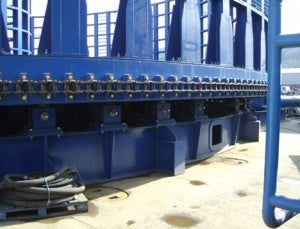
The strain gauge can be incorporated within a transducer or be mounted onto the structure where the measurement is required. Although there are many forms of strain gauge, the most adaptable is the foil strain gauge, although we are finding that a strain transducer can be used for many applications without the need for the application to be carried out by a strain gauge technician.
A strain gauge requires the need to find a measurement to overcome a practical problem. Sometimes this is shown by having a structural failure or wanting to know how close the structure can be extended to the limits or to confirm a design stress to the actual stress.
The strain gauge transducer is designed to measure extension in length in one direction and not be affected by the clamping force of the bolts. This is, in one way, the same as load cells that can be designed to fit within an assembly and measure the load or force in specified directions.
Most standard load cells have been designed to meet standard applications, using a method where the load is applied and the physical restrictions of the strain element used. The strain element is the term transducer manufactures use to describe the part of the load cell that the strain gauges are applied.
These can take the form of a column, a diaphragm, shear webs and other forms that give a known strain pattern when load is applied. This is why load cells and other transducers can be designed to customer requirements meeting special loading applications, housings and environmental protection.
By having knowledge of the application, special strain gauge transducers can be manufactured to meet the requirements of the application. In some cases, the existing structure can be used as the sensing element.
One of the common applications for using existing parts is the load measuring pin. By using an existing pivot pin it can be replaced with a load measuring pin to measure load in a single or dual direction. The cable carisol runs on roller sets and had to be levelled so the cable drum would run level with the minimum bending in the frame.
By installing bolt-on strain gauges it was possible to set all the rollers to exact levels.
Future developments
There are many more strain gauging requirements require now that deeper waters are being explored and equipment being exposed to harsher environments. There are a number of new requirements for anchor and hawser loading measurements for subsea applications that are being tackled. With the use of modern electronics and the advances in battery technology many more applications can be tackled.

